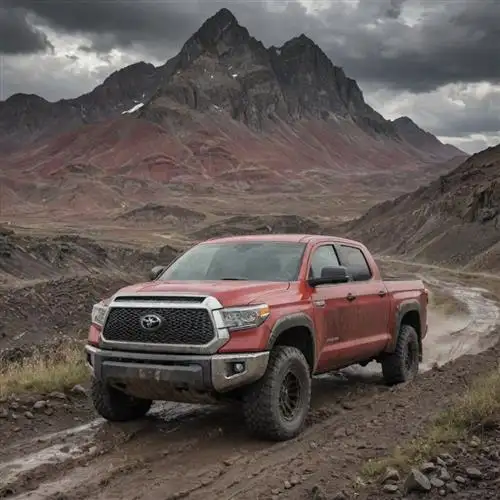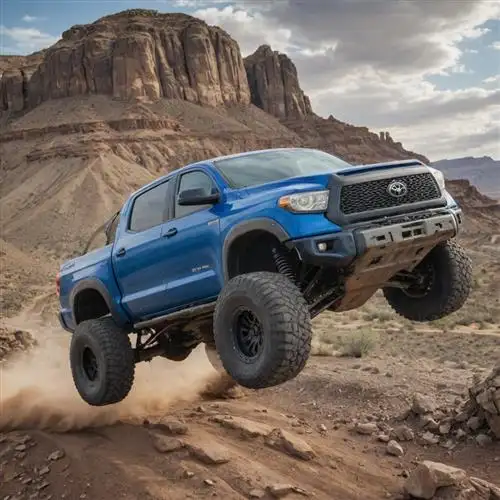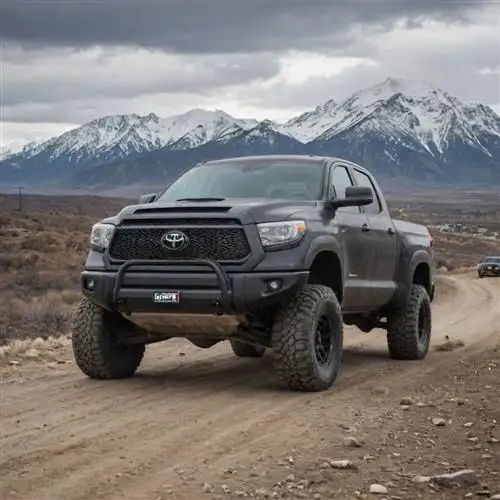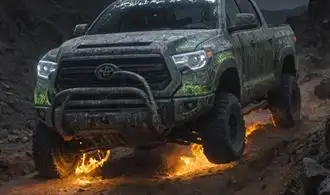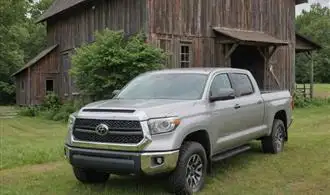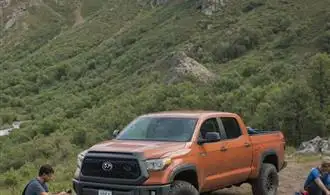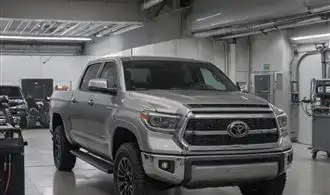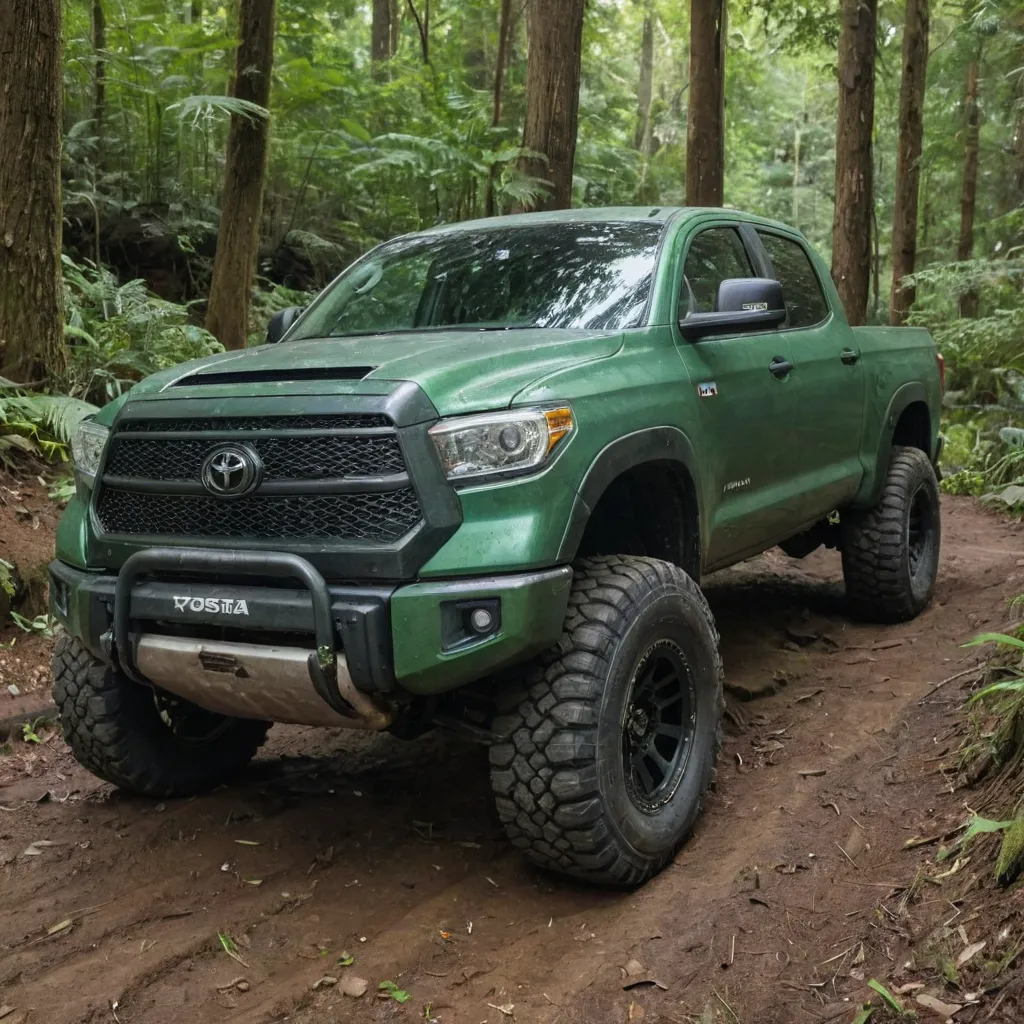
Tundra Tires for Conquering Any Terrain
As a Toyota Tundra owner, you know the importance of having the right tires for conquering any terrain. Whether you're tackling rugged off-road trails, traversing through mud and snow, or navigating city streets, the choice of tires can make all the difference in your vehicle's performance and your driving experience. In this comprehensive guide, we'll explore the secrets that savvy Tundra owners use to unleash their truck's full off-road potential with the perfect tire setup.
The foundation of any off-road-ready Tundra lies in its tires. Investing in a set of high-quality, all-terrain or mud-terrain tires can transform your truck's capabilities. Look for tires with deep, aggressive tread patterns that can grip the toughest surfaces, from loose gravel to packed mud. Features like reinforced sidewalls and advanced rubber compounds can provide the necessary toughness and durability to withstand the rigors of off-road driving.
Size matters when it comes to Tundra tires. Many experienced Tundra owners opt for larger tire sizes, often in the range of 33-35 inches in diameter. This extra height and width not only enhances your truck's stance and aggressive appearance but also improves ground clearance, allowing you to tackle obstacles and uneven terrain with ease. However, it's crucial to ensure your Tundra's suspension and brakes can handle the increased tire size without compromising safety or performance.
Beyond the physical attributes of the tires, the tire pressure you run can have a significant impact on your Tundra's off-road performance. Many Tundra enthusiasts recommend running lower tire pressures, typically in the range of 15-20 PSI, when venturing off the beaten path. This decreased pressure allows the tires to conform to the terrain, increasing traction and surface area for better grip. Remember to re-inflate the tires to the manufacturer-recommended pressure once you return to paved roads.
Choosing the right tire compound is another key factor in your Tundra's off-road domination. All-terrain tires often strike a balance between on-road and off-road performance, providing a suitable compromise. However, for the ultimate in off-road capability, mud-terrain tires are the way to go. These tires feature deeper, more aggressive tread patterns and softer rubber compounds that excel in the muckiest, most challenging conditions.
Suspension Upgrades for Unbreakable Articulation
The Toyota Tundra is a formidable off-road beast, but to truly unleash its full potential, savvy owners often turn to suspension upgrades. These modifications not only enhance articulation but also improve the truck's ability to tackle the most challenging terrains. One of the key areas of focus is the suspension system, which plays a critical role in ensuring a smooth and capable off-road experience.
Upgrading the Tundra's suspension components can significantly improve its overall performance and capability. High-quality shock absorbers, for instance, can provide a more supple and responsive ride, absorbing the impacts of uneven surfaces and allowing the wheels to maintain better contact with the ground. This, in turn, translates to improved traction and control, which is essential when navigating rough trails and technical obstacles.
Additionally, installing lift kits can increase the Tundra's ground clearance, allowing the vehicle to traverse over larger obstacles without scraping the undercarriage. This added height also enhances the suspension's articulation, enabling the wheels to flex and adapt to the terrain more effectively. By increasing the suspension's range of motion, owners can tackle steeper inclines, deeper ruts, and more challenging off-road environments with greater ease and confidence.
Paired with the right tire and wheel combination, suspension upgrades can truly transform the Toyota Tundra into an unstoppable off-road machine. Carefully selecting components that work in harmony, such as heavy-duty control arms, adjustable coilovers, or long-travel suspension systems, can unlock the truck's full off-road potential. These modifications not only enhance the Tundra's capability but also provide a more comfortable and enjoyable driving experience, whether traversing over rocky terrain or navigating through deep mud.
Underbody Protection for Unstoppable Conquests
When it comes to conquering the great outdoors with your Toyota Tundra, having the right underbody protection is crucial. The Tundra's rugged design and impressive off-road capabilities are a testament to Toyota's engineering prowess, but unleashing its full potential requires a few strategic upgrades. One of the most critical modifications is the installation of a robust underbody protection system.
Traversing rough terrain, navigating through deep mud, or scaling rocky inclines can take a toll on your Tundra's undercarriage. Without the proper safeguards, the delicate components and vital systems that lie beneath your truck can sustain significant damage, compromising both performance and safety. That's where underbody protection comes into play, shielding your Tundra from the relentless forces of the great outdoors.
When selecting an underbody protection system, there are several key factors to consider. Durability and impact resistance are paramount, as the system must be capable of withstanding the harsh punishment of off-road adventures. Many Tundra enthusiasts opt for heavy-duty skid plates, crafted from sturdy materials like high-strength steel or aircraft-grade aluminum. These plates shield the engine, transmission, transfer case, and other vital components from direct strikes and abrasion.
In addition to skid plates, some Tundra owners invest in rock sliders or rocker panel protection. These components safeguard the vulnerable areas along the truck's sides, preventing costly damage from side impacts and side scrapes. By combining comprehensive underbody protection with other off-road upgrades, such as lifted suspensions and beefy all-terrain tires, Tundra owners can conquer even the most unforgiving terrain with confidence.
Beyond the obvious physical protection, a well-designed underbody system can also improve the Tundra's overall off-road performance. By shielding key components, the system can reduce the risk of damage and ensure that critical systems continue to function optimally, even in the face of extreme conditions. This translates to greater traction, better articulation, and enhanced stability – all of which are essential for navigating challenging off-road obstacles.
Powertrain Enhancements for Unstoppable Torque
The Toyota Tundra is renowned for its impressive off-road capabilities, and owners have discovered a range of powertrain enhancements that can take this already capable truck to new heights. One of the most significant modifications is the upgrade to the engine and drivetrain, which can unleash remarkable levels of torque and power.
At the heart of the Tundra's impressive off-road performance is its robust and reliable V8 engine. Many owners have opted to enhance the engine's capabilities through a variety of methods, including forced induction systems, such as turbochargers or superchargers. These upgrades can significantly boost the engine's horsepower and torque, providing the necessary muscle to conquer even the most challenging terrain.
Transmission upgrades are another popular choice among Tundra enthusiasts. The stock transmission, while reliable, may not always be up to the task of handling the increased power and torque of a modified engine. Owners have turned to heavy-duty aftermarket transmissions, which can better withstand the demands of off-road driving and provide smoother, more responsive shifting.
Differentials are also an essential component of the Tundra's off-road prowess. Many owners have opted to upgrade their truck's differentials, including the front, rear, and even the center differential in the case of four-wheel-drive models. These upgrades can enhance traction, improve control, and ensure that power is distributed evenly to the wheels, even in the most demanding off-road conditions.
In addition to engine, transmission, and differential upgrades, Tundra owners have also explored other powertrain enhancements to boost their truck's off-road performance. These include:
- Upgraded driveline components, such as stronger axles, U-joints, and CV joints, to handle the increased power and torque
- Improved cooling systems, including larger radiators, additional fans, and upgraded oil coolers, to ensure the powertrain can operate at optimal temperatures even under the most demanding conditions
- Tuning and programming modifications, which can optimize the engine and transmission's performance characteristics for improved power delivery and responsiveness

